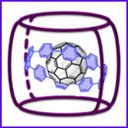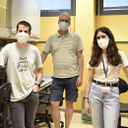
A Catalan-German collaboration has developed an innovative three-shell structure with the aim of improving future organic solar cells. XALOC beamline of the ALBA Synchrotron offered structural insights of this new system.

Large research facilities like the ALBA Synchrotron have become versatile infrastructures at the service of the scientific community to develop knowledge and join forces in the fight against the pandemic caused by Covid-19 and other diseases. On the World Health Day, ALBA takes stock of the experiments carried out in the last year that help to find answers to improve our living conditions.

A CSIC project reveals a new pharmacological site of the protein that is part of the roads that carry viruses and spread them in infected cells. The XALOC beamline of the ALBA Synchrotron contributed in determining the structure of this protein. Its discovery, thanks to the use of a new natural compound from cyanobacteria, opens the door to new drugs against viral infections or cancer.

For the first time, an international team of scientists recreated in the lab the molecule that allows the tsetse fly to feed on blood. It’s a powerful yet small anticoagulant with a unique and strong binding to thrombin, the key enzyme of the coagulation pathway. X-ray diffraction measurements at two synchrotron facilities ––ALBA and ESRF–– were instrumental to understand the structure and the mechanism of action of this molecule, which suggests it is also a promising platform for designing improved anticoagulant drugs.

A study led by scientists from the XALOC beamline of the ALBA Synchrotron reports an in-depth structural analysis of bacterial proteins involved in conjugation: Rap and Rco, at various levels of atomic detail. They have demonstrated that Rap tetramerization is induced by peptide binding, through a novel “foot-2-foot” interaction, not previously seen in other proteins of the Rap family. Tetramerization hampers Rap-Rco interaction, releasing Rco, which is a repressor protein, and thereby blocking conjugation, the transfer of genetic material between bacteria.




